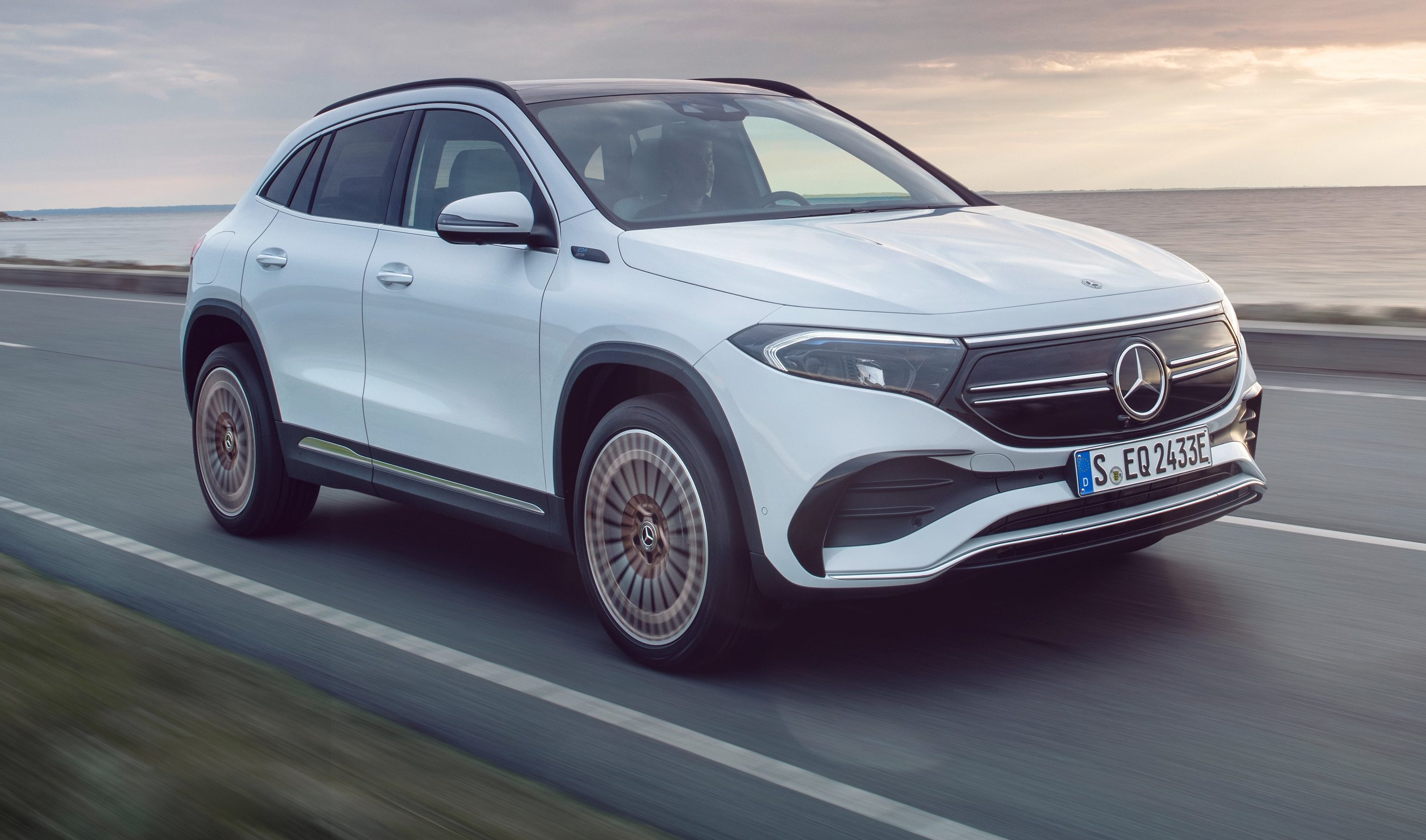With two new SUVs and one sedan, the brand already has five battery-driven models in Brazil


Mercedes-EQ, EQA 250, Edition 1, Fahraufnahme, digitalweiss. EQA 250 (Stromverbrauch kombiniert: 15,7 kWh/100 km; CO2-Emissionen kombiniert: 0 g/km) // Mercedes-EQ, EQA 250, Edition 1, driving shot, digital white. EQA 250 (combined power consumption: 15.7 kWh/100 km, combined CO2 emissions: 0 g/km)
By George Guimarães | Trabslated by Jorge Meditsch
Displaced from the top of the premium brands ranking by BMW in the last few years and with less than half the rival’s sales volume, Mercedes-Benz wants to change this beginning in 2023. To achieve this, it will bet heavily on the electrification of its portfolio. And fastly.
After launching the EQC models and the top-of-the-range EQS in the last two years, this week no less than three new pure electric models arrived at once in 13 of the brand’s 51 dealers: the sport-utilities EQA 250 and EQB 250 and the sedan EQE 300. AMG aesthetic package offered since the “entry” electric EQA
Costing R$ 480.9 thousand and R$ 502.9 thousand, respectively, the two SUVs gained the mission of “popularizing” the Mercedes electric lineup. “They will be responsible for most sales of our electrics”, asserts Evandro Bastos, product director.
Nonetheless, the executive does not anticipate figures or the total sales share. He argues that they may conquer more than the traditional Mercedes-Benz cars consumers, competitors’ customers younger than the average brand profile and even from other segments.
Dozens of colors in the SUVs internal lighting
Both vehicles received an AMG finish, emphasizing sportiveness with larger bumpers and wheels and internal details such as a flat base steering wheel and exclusive seats and pedals.
The EQB also innovates as the first segment’s seven-passenger option, expanding its reach to larger families and not specifically the traditional compact SUVs public, which will find in the EQA a more precise option for those who want an even sportier profile.
From January through September, MB sold slightly more than 4.4 thousand automobiles in Brazil. The two electric models offered until now, the EQC and EQS, had a very small participation, of about 2% of the total. With the reinforcements, Bastos understands the share will be “much larger” beginning next year, although not saying how much.
Launched in Europe at mid-year, the EQE shall have here the role of top-of-the-range of the electric line. This is because the EQS, the most expensive model, with a very similar body design, costs more than twice: over R$ 1.35 million, against R$ 709.9 thousand.
EQB innovates in the seven-place segment
Due to this difference, the EQE has the potential to reach a much more representative sales volume, even though limited to a few dozen units, not more than this.
Much more expensive than the SUVs, the EQE, which body is made of 100% recycled steel, looks to differentiate itself by its technology, performance and other resources. The sedan has rear-wheel drive and a 245 cv electric motor. Its maximum speed is electronically limited to 210 km/h and accelerates from 0 to 100 km/h in 7.3 seconds.
The EQA and EQB use the same 190 cv motor and have front-wheel drive. They accelerate from 0 to 100 km/h in 8.6 and 8.9 seconds, respectively. According to the manufacturer, the estimated range is 496 and 474 km. This is another technical advantage of the EQE, which can ride up to 645 km with a single battery charge, the largest range of Mercedes’ electric lineup.
As with the EQS, the sedan batteries have a 10 years or 250 thousand kilometer warranty, much higher than the offered to the SUVs – 8 years or 160 thousand kilometer. According to Bastos, the difference happens because the batteries are from different suppliers.
Na briga por lucros no mercado brasileiro sobram incentivos e ninguém oferece carros mais acessíveis
VW também lidera no segmento de SUVs, que ganha novo modelo da marca esta semana
Com motor 4.0 biturbo V8 de 640 cv, acelera de 0 a 100 km em…
Diretor de operações lidera a expansão e a consolidação da marca no Brasil
Há risco de acionamento involuntário do airbag